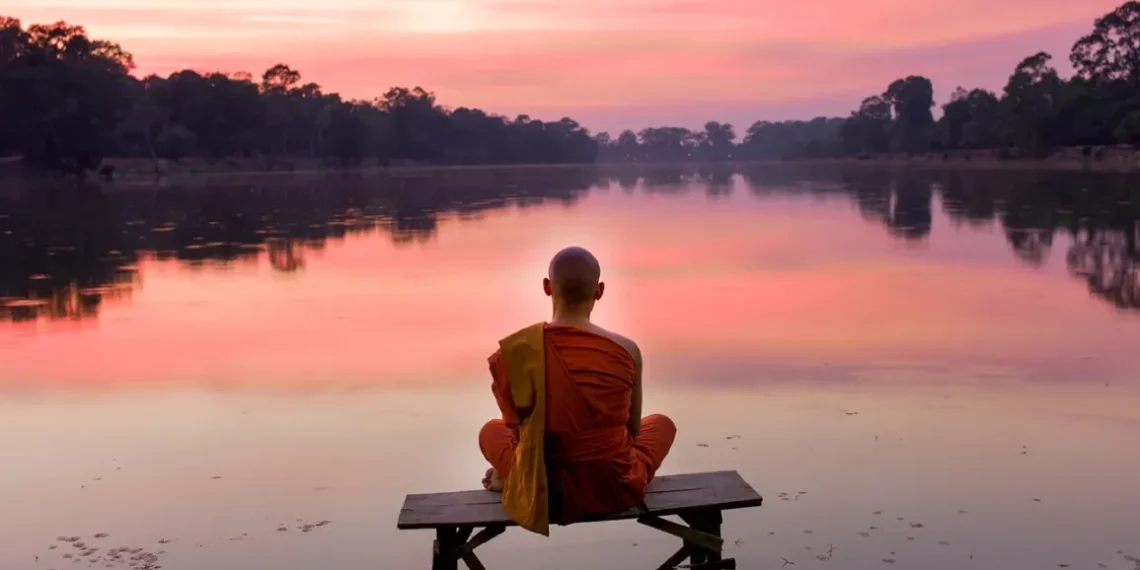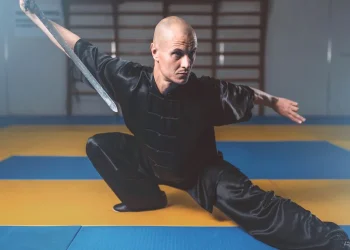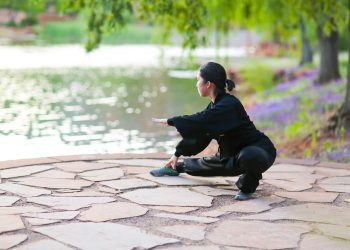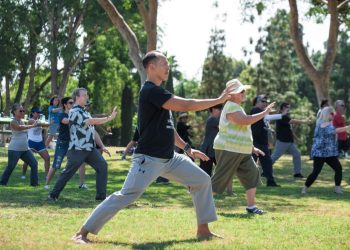As the day draws to a close and the world begins to settle into twilight, there exists a precious opportunity to transition from the busyness of daily life into the quiet sanctuary of evening. Evening walking meditation offers a gentle bridge between the demands of your day and the restorative rest that awaits you. This ancient practice, adapted for our modern lives, invites you to slow down, reconnect with your body, and find peace in the simple act of walking.
The Unique Gift of Evening Practice
Walking meditation in the evening carries a distinct quality that sets it apart from morning or midday practice. While morning meditation often focuses on energizing and preparing for the day ahead, evening practice serves a different purpose: it helps you process, release, and gently decompress from everything you’ve experienced since dawn.
The evening hours naturally encourage introspection. As daylight fades, our external focus softens, and we become more receptive to our inner landscape. The cooler air, the changing light, and the quieting of neighborhood activity all contribute to a atmosphere conducive to meditation. Your body, too, is ready for this transition. After hours of doing and accomplishing, your nervous system welcomes the invitation to shift from sympathetic activation into parasympathetic restoration.
Evening walking meditation offers numerous benefits for both body and mind. It helps metabolize the stress accumulated throughout the day, allowing tensions to gradually dissolve with each mindful step. The gentle physical movement aids digestion after dinner, promoting better sleep quality later in the night. Unlike vigorous exercise, which can be too stimulating before bed, the slow, deliberate pace of walking meditation actually signals to your body that it’s time to wind down.
This practice also creates a healthy boundary between your active day and your resting evening. In our always-connected world, where work emails follow us home and screens keep our minds engaged, establishing a clear transition ritual becomes essential. Walking meditation serves as a reset button, allowing you to consciously leave behind the concerns of the day and arrive more fully in the present moment.
Preparing for Your Evening Walk
The beauty of evening walking meditation lies in its simplicity, yet a little preparation can deepen your experience. Choose a time when you can walk without rushing, ideally before it gets completely dark, though some practitioners enjoy the quietness of dusk or even nighttime walks in safe, familiar areas.
Your location matters less than your intention. You might walk in your backyard, around your block, through a nearby park, or even in a longer hallway if weather or circumstances keep you indoors. The path need not be long; you’ll be walking slowly, so even a short distance can provide twenty to thirty minutes of practice.
Wear comfortable clothing that allows easy movement. If it’s cool outside, dress in layers so you can adjust as your body warms. Shoes should be comfortable and allow you to feel the ground beneath your feet, though some practitioners enjoy walking barefoot on grass or soft earth when possible, weather permitting.
Before you begin, take a moment to set an intention for your practice. This doesn’t need to be elaborate perhaps simply “to let go of the day” or “to arrive in this moment” or “to walk in peace.” This brief pause helps transition your mind from doing mode to being mode.
The Practice: Walking with Presence
Begin by standing still for a few moments. Feel your feet on the ground, notice your breath moving naturally, and become aware of your body standing here in this moment. Let your arms hang naturally at your sides or rest your hands gently at your waist or clasped lightly in front of you—whatever feels most comfortable and natural.
When you’re ready, start walking at a pace that’s noticeably slower than your usual stride. This isn’t about getting anywhere; it’s about being fully present for each step. The recommended pace is roughly half or even a third of your normal walking speed, though you should find what feels right for you. The slower pace allows you to notice subtleties of sensation and movement that usually escape your attention.
As you walk, bring your awareness to the physical sensations of walking. Feel the shifting of your weight from one foot to the other. Notice the heel touching down, the sole of your foot making contact with the ground, the transfer of weight through your foot, and the eventual lifting of your heel as your foot prepares for the next step. You might mentally note the phases: “lifting, moving, placing” or simply “left, right” or just feel the sensations without words.
Your gaze should be soft and lowered, looking naturally ahead a few feet in front of you without focusing intently on anything in particular. This soft gaze helps maintain balance while keeping you present rather than distracted by your surroundings.
When your mind wanders and it will, as minds naturally do simply notice where it went without judgment and gently bring your attention back to the sensation of walking. You might notice thoughts about work, replays of conversations, plans for tomorrow, or countless other mental content. Each time you notice you’ve drifted, you have an opportunity to practice returning to the present. This returning is the meditation; it’s not a failure but the very heart of the practice.
Some practitioners find it helpful to coordinate breath with steps, perhaps breathing in for two or three steps and out for two or three steps, though this should feel natural rather than forced. Others prefer to let the breath move naturally while keeping attention on the feet and legs. Experiment to find what helps you stay present.
Creating Your Evening Routine
The most profound benefits of walking meditation emerge when it becomes a regular part of your evening routine. Consistency matters more than duration even ten minutes daily is more valuable than an hour once a week. Consider this practice your gift to yourself, a non-negotiable appointment with peace.
Timing your walk intentionally within your evening schedule helps establish the habit. Some people walk immediately after arriving home from work, using it to transition out of work mode. Others walk after dinner, aiding digestion and providing space before evening activities. Still others walk as one of the last activities before preparing for bed. Notice what timing works best for your schedule and energy levels.
You might enhance your evening meditation routine by creating a simple ritual around it. This could be as simple as changing into comfortable clothes, having a glass of water, or taking three deep breaths by the door before stepping outside. These small actions signal to your mind and body that you’re entering meditation time.
Consider varying your route occasionally to keep the practice fresh, but also recognize the value of a familiar path where you don’t need to navigate or make decisions. Some evenings, you might walk in complete silence; other times, you might enjoy the sounds of evening birds settling in for the night, distant conversations, the wind in the trees. All of these can be part of your meditation if you remain present with them.
Deepening the Practice
As you become more comfortable with basic walking meditation, you can explore variations that enrich your experience. Try walking meditation in different weather conditions the feeling of cool rain, the warmth of a summer evening, the crispness of autumn air. Each offers unique sensations to explore with mindful awareness.
You might occasionally expand your awareness beyond the feet to include your whole body moving through space. Notice your arms swinging gently, your torso stable and upright, your head balanced atop your spine. Feel yourself as a complete, integrated organism moving with intention and grace.
Some evenings, you might practice loving-kindness while walking, silently offering wishes for peace and wellbeing to yourself, to loved ones, to neighbors you pass, even to all beings everywhere. This transforms your walk into a moving meditation of goodwill.
Closing Your Practice
When your designated time ends or you arrive back where you started, pause again before continuing with your evening. Stand still for a few moments, feeling your body, noticing your breath, and acknowledging the peace you’ve cultivated. This pause helps you carry the quality of presence you’ve developed into the rest of your evening.
As you move into whatever comes next—dinner, time with family, reading, preparing for bed see if you can maintain a thread of the awareness you practiced while walking. You might notice you’re more patient, more present, more at ease. This is the gift of practice extending beyond the formal meditation time.
Embracing the Journey
Walking meditation is ultimately a practice of befriending yourself and this moment, exactly as it is. Some evenings you’ll feel calm and centered; other evenings your mind will be busy and your body restless. Both are fine. The practice isn’t about achieving a particular state but about showing up with kindness and attention, again and again.
As you establish your evening walking meditation practice, be patient with yourself. Like any skill, meditation deepens with time and repetition. You’re not trying to fix yourself or become someone else. You’re simply learning to be more fully present for the life you’re already living, one mindful step at a time, as day transforms into night and activity yields to rest.






